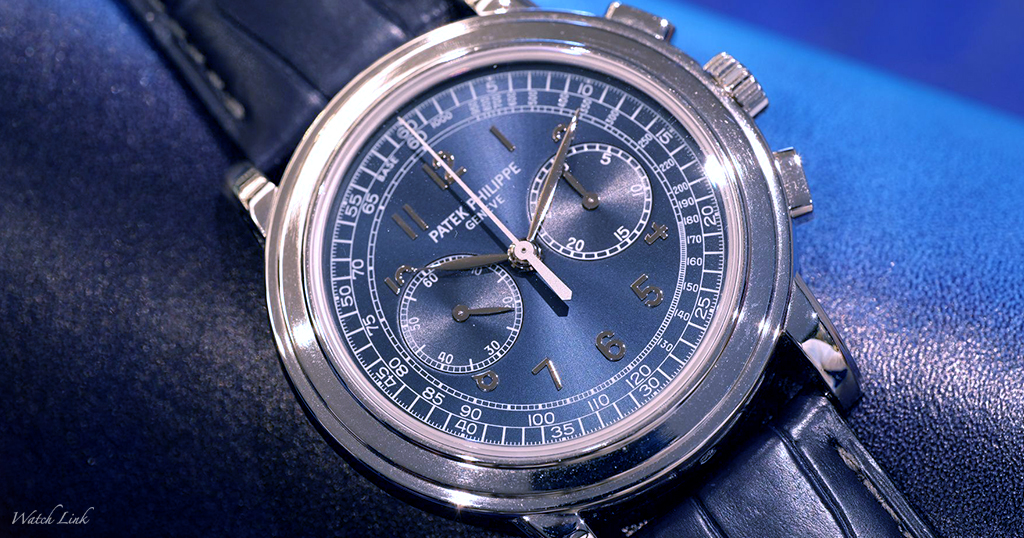When you’re considering building a collection of luxury dress chronographs made by some of the finest watchmakers in the world, the Patek Philippe 5070 is certainly a piece that should come to your mind, along with the A.Lange Sohne Datograph, a couple of Vacheron Constantines, and perhaps even the Jaeger-Lecoultre Duomètre à Chronographe from a horological perspective.
All of these fall into the top class of dress chronographs made by the most prestigious watchmakers in the world.
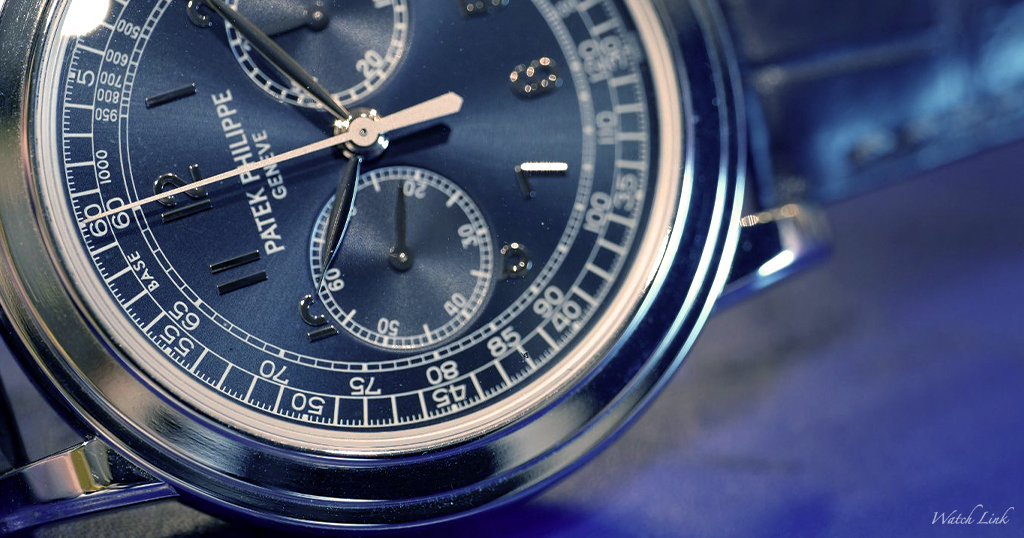
However, the Patek Philippe 5070P we are focusing on in this article today is one of the finest chronographs in the market when we factor in brand history, watchmaking and contemporary touch to dress watches.
As often as we come across rare and exclusive watches, rarely do we come across a contemporary dress watch that can match the status of the 5070P. It’s hard to predict which watches will go on to be both historically and horologically significant. That being said, there are some watches made within the past two decades that, in my opinion, changed the industry standard and marked their place as a collectable model.
Brief History on the Patek Philippe 5070
Inspired by a unique split-second chronograph, Ref 1463 made in the 1940s, Patek Philippe introduced the 5070 collection as the first collection with a case size larger than 40 mm. It was originally produced in yellow gold back in 1998 before the introduction of other precious metals such as the platinum version we have with us today.
The initial release of the yellow gold version with its black dial is followed by white gold and rose gold variants. In 2008, we witnessed the birth of the platinum 5070 in a beautiful blue dial to commemorate 5070s 10th year anniversary. Patek Philippe offered us their vision of what a contemporary manual chronograph should be and brought us back in time with a touch of vintage chronographs in Patek’s heritage.
Taking a step back in time
Back in the 1940s the “Tasti Tondi” Ref. 1463 was Patek Philippe’s first waterproof chronograph, which was a major milestone.
The nickname “Tasti Tondi”, is derived from the round pushers (different from the 5070) with a grippy finish on the pressable surface.
It immediately became legendary and is still highly sought after by Patek Philippe connoisseurs today. It was then discontinued back in 1965, after 25 years of production.
Patek Philippe waited till 1998 to restart the production of manually-wound chronographs with the introduction of ref. 5070 before entering the horological Hall of Fame.
The reproduction of a manual chronograph is not the only headline back in 1998. It is uncommon for a dress watch to be as huge as 42mm back in the days. In fact, 42mm in today’s market is still considered as relatively huge for a dress watch.
Despite its size among this prestigious category, the proportion of the case is immaculate, just like every other creation from the iconic house .
Dissecting the 5070P

The final version, 5070P produced between 2008 and 2009, is by far the rarest and sought after due to its short production run and it being a commemorative model.
It makes total sense for platinum to be used as it is one of the most expensive and exclusive precious metals found in watches. While no exact production numbers exist, the estimated quantity of 5070Ps in the market are between 200 to 250 due to the short production run. The yellow gold estimates are between 750 to 1000 with the white and rose gold estimates at 1250 to 1500.
At the end of the day, the true joy of owning a watch comes from wearing it, besides historical significance and rarity.
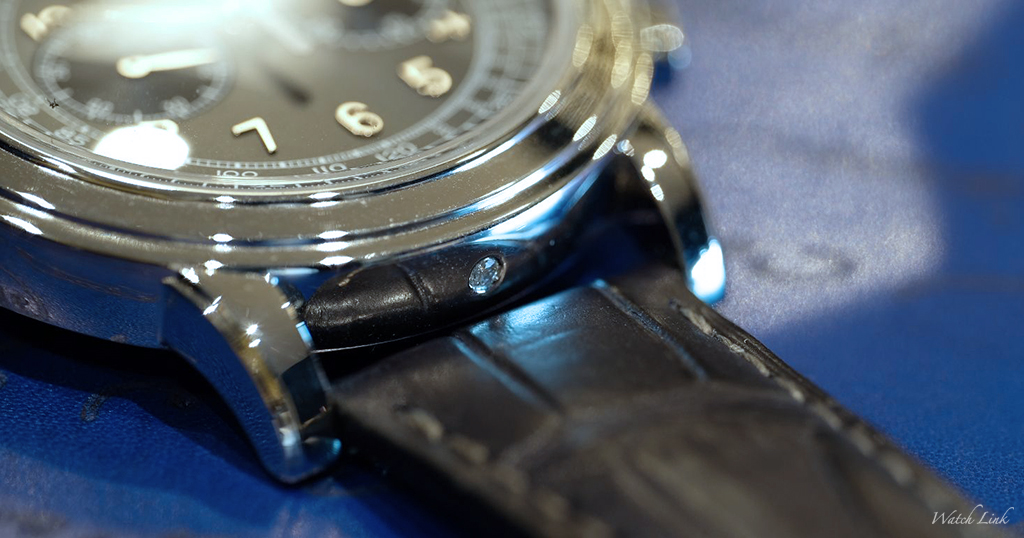
The 5070P comes in a hefty platinum case and is paired with a slightly shaded blue gradient dial. This iteration features a white signature and markings to make them really pop from the darker dial. The hand and indices are also made in platinum. Like 99% of Platinum Patek Philippe, there is a small diamond set at the case near 6 o’clock.
Case and dial
One of the biggest highlights of the 5070 is the dimensions and proportion.
Since the early 2000s, bigger watch cases are rather common and popular. However, in 1998, a 42mm case, especially one that is produced by Patek Philippe, is novel to many.
Despite the larger case size, it does not wear like a 42mm. To counter this larger diameter, Patek Philippe managed to slim the case down to only 11.6mm thick. I will touch on how they managed to pack the movement into a slim case in the latter part of this article.
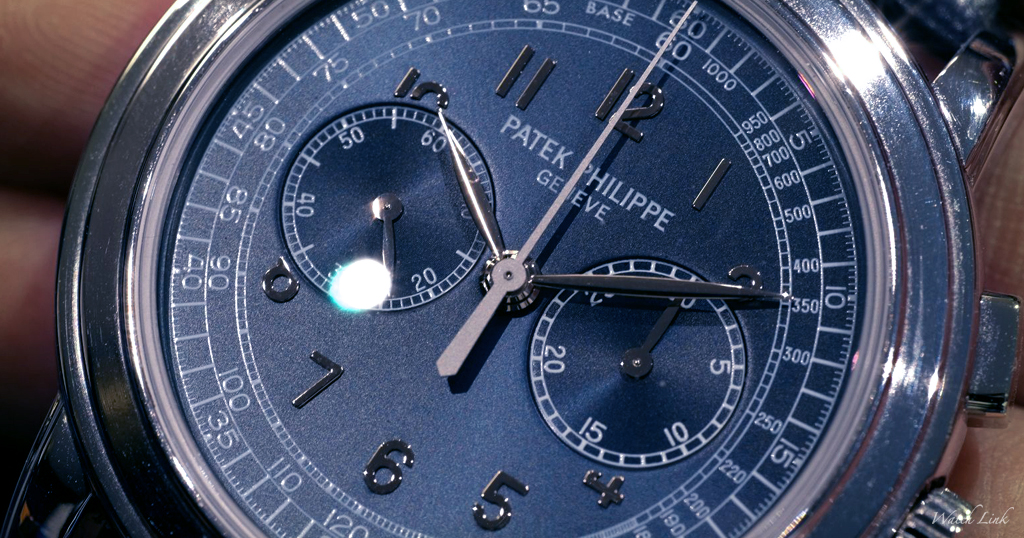
The perfect ratio between diameter and thickness of the watch makes the 5070 an elegant dress watch. In my opinion, the decision of using square pushers and well-proportioned dimensions of the crown is the one of the most defining characteristics of the watch.
The word coherent is my first impression of the 5070P. The square pushers, the well-proportioned crown, the multi level bezel, and the thin lugs enhance the presence of the 5070P.
The layout of the dial is consistent in all its iterations, in all precious metals produced, featuring an outer seconds track for the chronograph with 1/5th of a second graduations and a tachymeter scale inside of the minute track.
The two large sub-dials at 3 o’clock for the 30 minute and at 9 for the small seconds, are both perfectly aligned with the centre of the dial, creating perfect symmetry. This fits the textbook Patek Philippe design elements – elegance, simplicity and sleekness in its dials, complimented by the leaf-shaped platinum hands.
As usual, Patek Philippe perfectly demonstrate their technical flair to decrease the visual impact of the centred counters, with a tachymetric scale, just after the seconds indexes.
The only nitpick of the watch is that the sundial overlaps the hour indexes on the dial, which could be rather disorientated from the overall look. However, because of the symmetrical sub dials and colour tone used, it’s not the first thing you would find and be annoyed about.
The movement
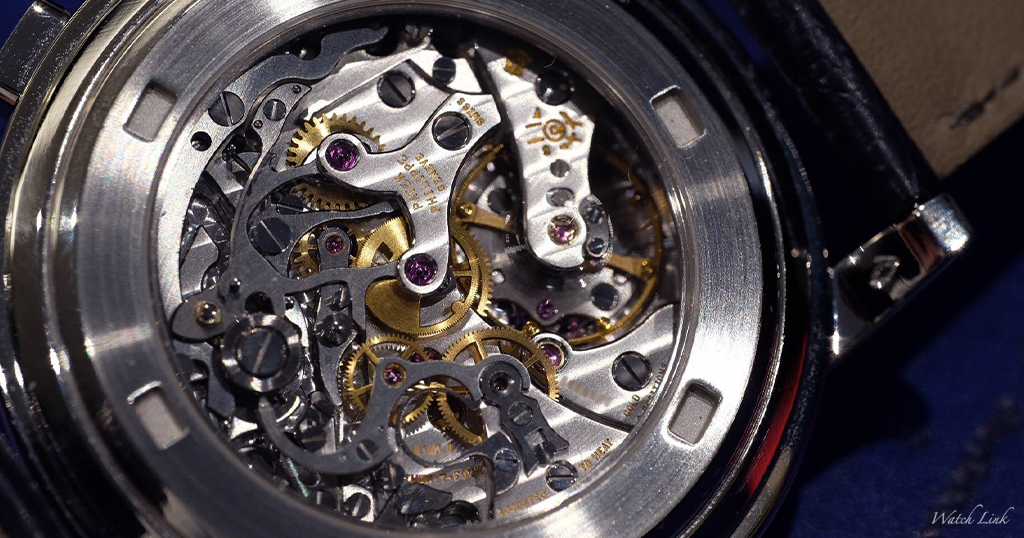
We can’t move on talking about Patek Philippe without going in-depth on the movement.
Being the last ever Patek Philippe chronograph with a Lemania-based movement immediately placed the 5070 into collector’s list. This marks the end of an era for all Lemania based Patek and it is a significant moment in the history of Patek Philippe.
The CH 27-70 continued to be used in the successor to the 3970, the larger 40mm-diameter 5970 designed by Thierry Stern.
Displaying the movement is a case-back features a sapphire crystal, which allows the owner to gaze upon the mechanical marvel, CH 27-70, a Lemania based manual caliber 2310, whose 18,000 vibrations per hour frequency allows for its 58-hour power reserve. (Fun fact: The Lemania 2310 is also the base movement for the iconic Omega 321, a testament to the legacy and quality of this calibre. )
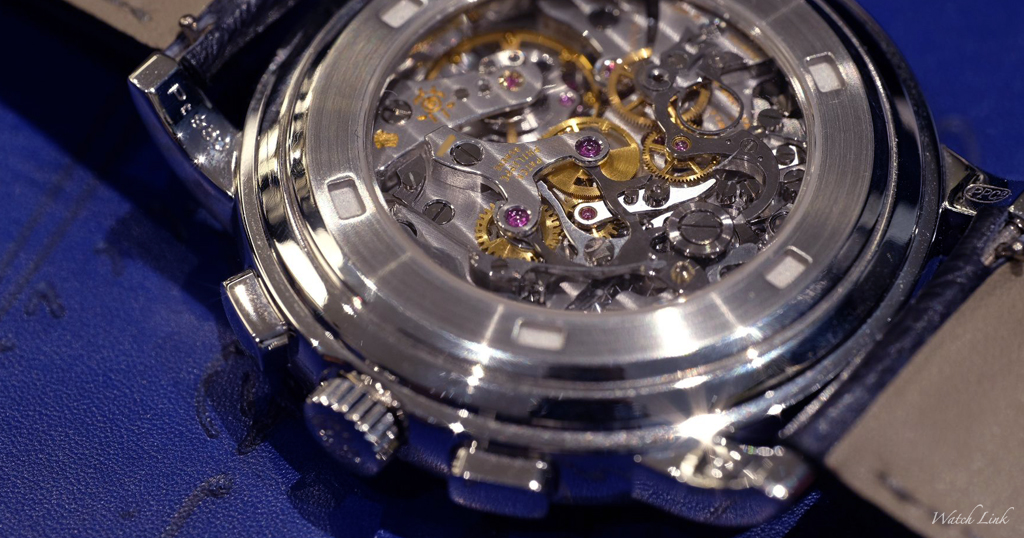
It’s constructed with 24 jewels, a shock absorber device, and a straight-line lever escapement.
The finish conforms to Patek Philippe’s reputation for a watch of this segment, with some pleasant handmade anglages, Cotes De Genève. The movement is beautifully finished, with exquisite chamfering on all angles.
The teeth of the train wheels have been re-profiled by the trained watch technicials for smoother transmission of energy in the movement and constant mechanical precision, with new ratios from the centre wheel to the barrel contributing to the reliability and accuracy of the movement.
The movement uses a large monometallic Gyromax balance wheel with a high moment of inertia that guarantees its timing stability.
So how did Patek manage to integrate the small movement into the 5070 big cases perfectly?
Patek Philippe opted for a bevelled multi level screw in case back, larger at the base, narrower at the top.
In this way, the visual impression does not make the movement look “small”, filling the case back in a coherent way.
Specifications
Reference: CH 27-70
Base: Lemania 2310
Movement: Handwound
Display: Analog
Diameter: 27.50
Jewels: 24
Power Reserve: 60
Frequency: 18000
Chronograph: Chronograph, Column wheel
Hands: Hours, Minutes, Small Seconds
Final Thoughts
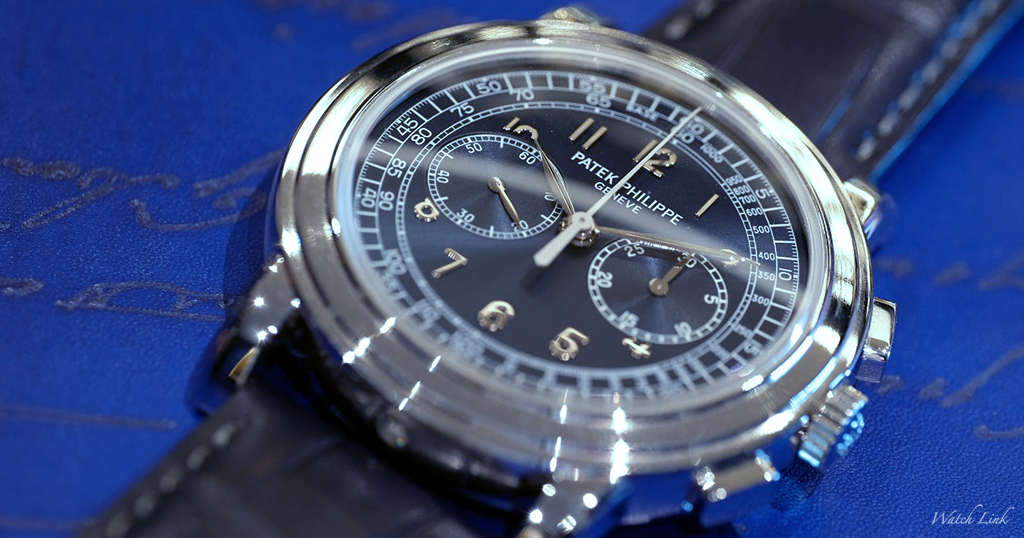
Many will compare between 5070 and 5170 when they are looking for a dress chronograph from Patek. In my opinion, these two are very different watches. Patek Philippe has left through his history many iconic watches, proof of their technical mastery and aesthetical taste.
The 5070 and the 5170 come from two different universes within the chronograph lineage, at two very different periods and I don’t think they should be opposed. At the end of the day, it’s down to personal preference when deciding between these two. If you are an avid Patek Philippe collector, having both should be at the top of your list.
Since we are specifically touching on the 5070 today, we will go in-depth with the 5170 another day. As for the 5070P, I was very impressed by this platinum case, with its awesome blue dial. As expected with most Patek Philippe, this timepiece is of the highest quality available.
The Patek Philippe 5070P isn’t available often and when it is, it’s more commonly offered at auction and aggressively fought over. When chanced upon one, you get an opportunity to purchase what will become an important piece of history from the world’s most eminent watch brand. While you can buy this piece, we all know you won’t ever really get to own it, just look after it for the next generation.
The 5070P falls under investment grade for a couple of reasons:
- Discontinued model
- Last generation with Lemania based movement
- 10th Year Anniversary Model
- Platinum with blue dial is always highly desirable in the watch market.
Based on historical price data from auction house and transacted sale in the secondary market, the projected growth per annum for the 5070P is estimated to be around 10%. With all the hype leaning towards sports models at the moment, I foresee that collectors will start to shift their attention to classic timepieces created by Patek Philippe in the future.

